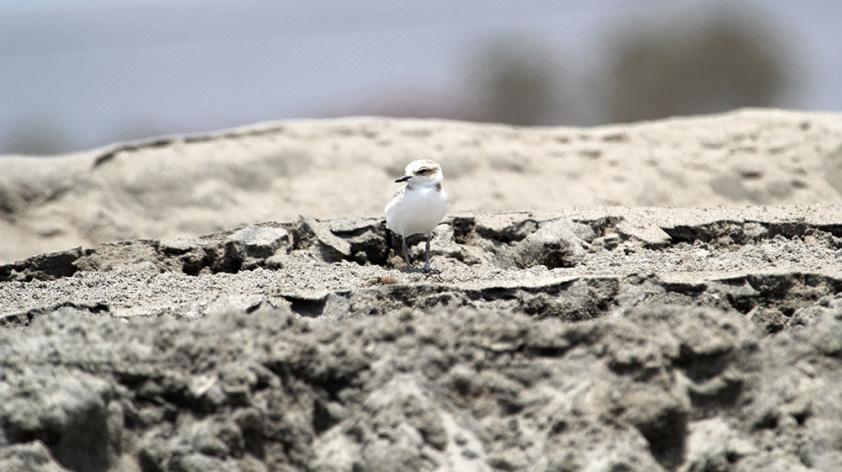
Co-existence with a Powerful Force
The life of a plover is not an easy one. Western snowy plovers face many hardships from the day they hatch until adulthood. Most western snowy plovers hatch on the beaches of the West Coast and spend much of their lives on these beaches. As chicks, they rely on their parents, especially the male, for knowledge and protection. The adults lead their chicks to feeding areas—usually near the water—and keep a close eye on them, but must also be aware of their surroundings. The male plover is the “protector” and watches the beaches and skies for predators, but this is not the only danger they face. They must also be aware of other plovers’ territories and keep their young, defenseless chicks out of these areas to avoid harm. Fortunately, their cryptic nature helps them potentially avoid these dangers.
Yet, the one danger they cannot avoid, fight off, or hide from is Mother Nature. She can be relenting, significant, and does not discriminate. Mother Nature comes in many forms, from temperature extremes to wind to significant storms, which can change the beaches overnight. We saw one of these landscape-altering storms the first weekend in May, and the result was dramatic. The storm occurred over a weekend and lasted a few days. It unleashed a fury of rain along with habitat altering 10- to 12-foot waves.
When we visited the beach the following Monday, the damage was worse than I expected. Most of the plovers had lost their nests. The storm surge had completely covered a section of one beach and all the nests were just gone. No nest markers (previously placed by us) or eggs were found. In most cases, we couldn’t even find a nest cup. We went to another beach and were astounded at what we saw. The entire southern half of the beach was gone. Mother Nature had reshaped the beach.
As you can guess, all the plover nests were gone on this beach as well. So much sand had been washed away that the new high tide line was well beyond where most of the nests had occurred—in some sections, as much as 20 to 30 feet higher than before. On both of these beaches we had previously observed several broods of chicks and after two days of surveying only a handful had survived. The transformation of this beach was an incredible display of power. All this had occurred in just a few days. However, plovers are resilient and within a few days new nests were found and newly hatched chicks were running around learning to catch bugs. Mother Nature wasn’t done for the season, but the plovers would deal with her again when the time arises.
The upcoming breeding season could be the biggest challenge yet for the plovers, with the forecasted El Niño event (predicted to be the strongest in 18 years) bringing significant rainfall and mass destruction. The beaches will once again be transformed as the plovers begin to establish territories in this familiar, yet alien landscape. Adaptation will be critical and habitat loss could be significant. Their will to survive is strong, but how much change is acceptable?













